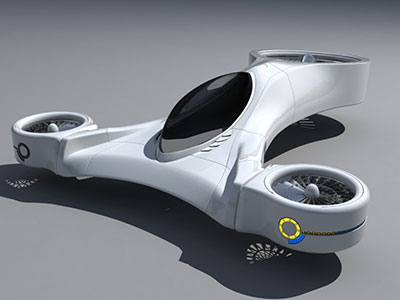BoldIQ featured in the LA Times
Can the flying car, the Uber of the air, become a reality, saving you time and money? By Judy Mandell – L.A. Times

Picture this: You download an app that directs you to the top of a nearby building, where you hop on a flying car.
Is this ride-hailing experience — something like Uber — the wave of the transportation future? Could it save you time and, thus, money?
Roei Ganzarski, chief executive of BoldIQ, a Seattle-based software company, and previously chief customer officer for Boeing’s flight services division, contends that it is just a matter of time before helicopters are replaced with safer, more efficient, lower-cost, pilotless flying machines.
Those, he thinks, will rapidly be followed by consumer-based air taxis.
I asked Ganzarski to offer his insights on the implementation of air taxis and how they will transform everyday travel.
How and why will this type of air taxi revolutionize the way we travel?
Ground transportation is limited to the road infrastructure. Even with smarter cars driving closer together on the road, you are limited by where these roads go and how.
With an air taxi service (and a true vertical takeoff and landing, where a rooftop, grass lawn, or beach can serve as a landing), the sky is literally the limit.
Air travel is multidimensional. If a direct path from point A to B is full, taxis can simply go up or down 500 feet and the same path may now be empty.
The ability to be creative and productive while being very efficient is what this type of system provides.
This is assuming, of course, that it is indeed set up efficiently and not how ground transport is today: wasteful and inefficient.
Which tech companies and manufacturers will compete in this air taxi market?
Traditional aviation companies like Boeing or Airbus will certainly try, as well as car companies. However, the most successful parties will most likely be either a “Google” that is able to think differently and move fast or a new entrant that is not bound by anything.
That is for the hardware. A software able to manage this real-time, on-demand transport system is also needed.
Will this type of travel be affordable for everyday business/pleasure travelers?
Like all new technology, it will initially be limited to very high-worth individuals like corporate executives.
Just as the first automobiles and airplanes were first used by the wealthy and then the masses, air taxis will initially follow this pattern.
With time, it will become commonplace.
I wouldn’t be surprised to see initial short flights priced in the $250-$350 range, for example, flying from a rooftop in Manhattan to Queens, New Jersey or Valley Stream, or downtown San Francisco to a home in Palo Alto (or split that between passengers to pay $50-$100 a person), eventually dropping down even to tens of dollars for short rides.
How will all of this work?
You will ask to go from point A to B using your watch, head-worn mic or other form of communication that will make the smartphones and apps as we know them obsolete.
A central scheduling engine will evaluate your requests against the relevant resources (transport vehicles, rooftops, number of vehicles in the air, etc.) and make an intelligent decision on which vehicle can and should pick you up and then where, when and how it will get you to your destination. This plan will be continuously updated in real time as factors change around you.
Will it clog the airways?
Only if you think about airways in the very old way of thinking about them — as roads in the sky.
Oh, wait…that is how we think today. People, industries and governments will have to (and be able to) think about air travel in a different way than today.
And with the right software managing the network, there will be no clogging.
Who will be allowed to fly these planes?
Really smart software … you don’t want people at the controls.
When will it happen?
I believe we will see this type of service in place in the next 10 years.
In a way, this service could be in place now using helicopters, and yet we have not seen it take off — pun intended.
However, as the technology for the aircraft is developed, costs are lowered, the pilotless technology is proven and intelligent scheduling software takes hold, the paradigm shift will happen.



